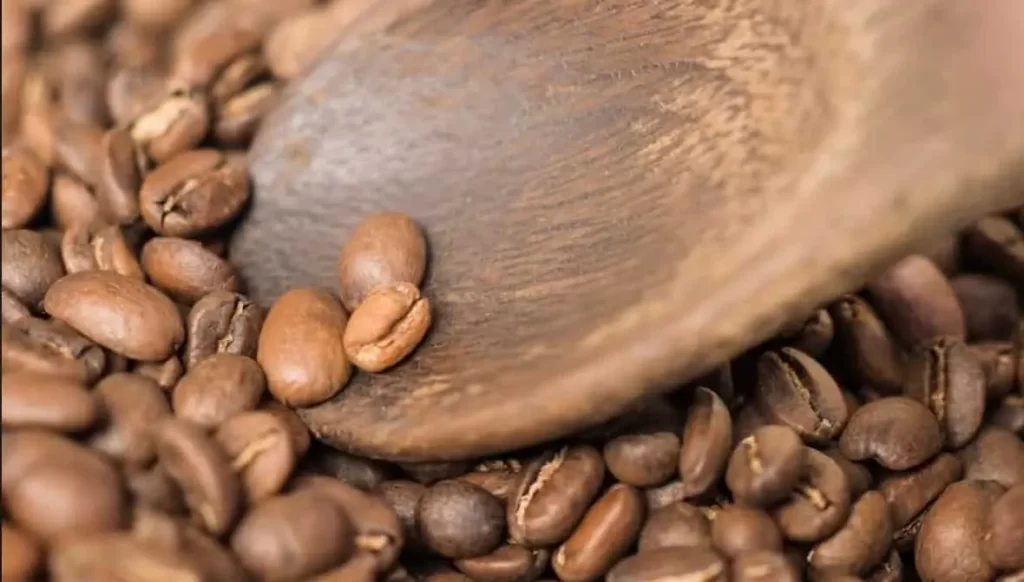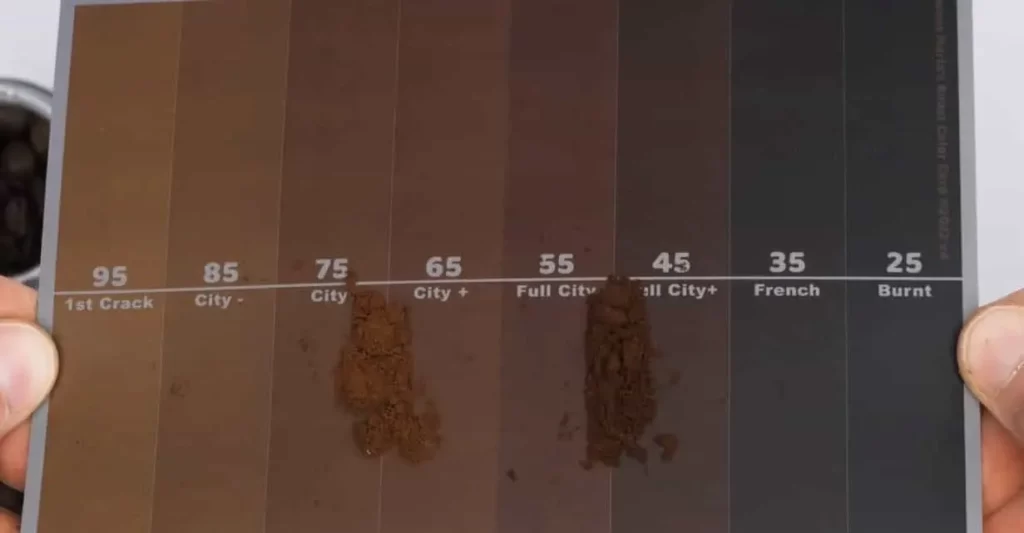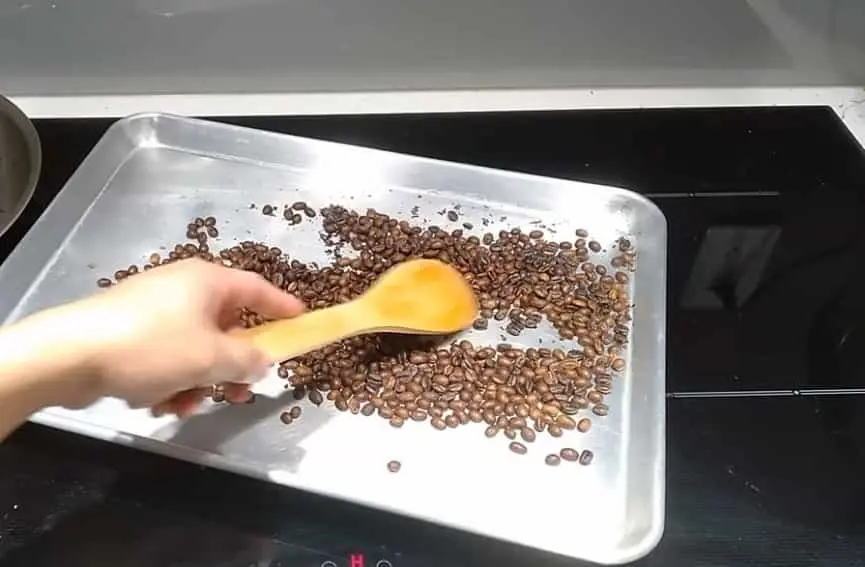Are you a coffee lover who craves the freshest and most flavorful cup of joe possible? Have you ever considered roasting your own coffee beans at home? Home coffee roasting has been gaining popularity among coffee enthusiasts, allowing them to have full control over the roasting process and create their own unique coffee profiles.
In this comprehensive guide, we will delve into the world of home coffee roasting and provide you with all the information you need to get started on your journey to perfectly roasted coffee.
Roasting coffee beans at home offers several advantages over buying pre-roasted coffee. One of the key benefits is freshness. When you roast your own coffee beans, you have the ability to control the roast level and ensure that your coffee is as fresh as possible. Freshly roasted coffee beans have a richer aroma, more complex flavors, and a fuller body compared to store-bought coffee that may have been roasted weeks or even months ago.
Another advantage of home coffee roasting is customization. As a home roaster, you have the flexibility to experiment with different coffee beans, roast levels, and roasting techniques to create your own unique blends and flavor profiles. You can tailor the roasting process to suit your personal taste preferences, whether you prefer a light, medium, or dark roast. With practice and experimentation, you can develop your own roasting style and fine-tune your coffee to perfection.
In addition to freshness and customization, home coffee roasting can also save you money in the long run. Green coffee beans, which are unroasted coffee beans, are generally less expensive than pre-roasted coffee beans. By roasting your own coffee beans at home, you can potentially save on the cost of buying premium roasted coffee, and the investment in a coffee roasting setup can pay off in the long term.
However, before you jump into home coffee roasting, it’s essential to understand the coffee roasting process and the equipment involved. Coffee roasting is a delicate art and science that requires careful attention to time, temperature, and other variables to achieve the desired results.
In the following sections of this guide, we will delve deeper into the coffee roasting process, including the different stages of roasting, selecting and sourcing coffee beans, preparing for coffee roasting, coffee roasting techniques, cooling and storing roasted coffee beans, and customizing your roasts.
Understanding the Coffee Roasting Process
To become a successful home coffee roaster, it’s crucial to understand the coffee roasting process. Roasting coffee beans is a complex chemical reaction that transforms the green coffee beans into the familiar brown beans we use for brewing coffee. Let’s take a closer look at the different stages of the coffee roasting process:
Drying: The coffee roasting process begins with drying the green coffee beans. During this stage, the beans lose their moisture content and undergo a physical transformation. The beans turn from green to yellow and start to emit a grassy smell. This stage is critical as it sets the foundation for the rest of the roasting process.
Maillard Reaction: As the drying stage progresses, the beans enter the Maillard reaction phase. This is where the beans start to develop their unique flavors and aromas. The Maillard reaction is a complex chemical process that involves the interaction of amino acids and reducing sugars in the coffee beans, resulting in the formation of hundreds of different flavor compounds. This stage is crucial in developing the coffee’s flavor profile.
First Crack: After the Maillard reaction, the beans go through the first crack, which is a noticeable cracking sound resembling popcorn popping. This is a crucial point in the roasting process as the beans undergo rapid expansion and release carbon dioxide. The first crack marks the beginning of the light roast stage, where the coffee beans start to develop acidity, brightness, and fruity notes.
Development Roast: The coffee beans continue to roast after the first crack, and this stage is known as the development roast. During this stage, the beans undergo further chemical reactions that contribute to the formation of complex flavors and aromas. The roasting time and temperature are critical at this stage as they determine the final flavor profile of the coffee.
Second Crack: If you continue to roast the beans beyond the development roast, you may reach the second crack stage. The second crack is another distinct cracking sound, and the beans undergo further expansion and release more carbon dioxide. The beans become darker, and the flavors become more intense and bold, with hints of bitterness and smokiness.
Dark Roast: If you continue to roast the beans even further, you may enter the dark roast stage, also known as the French or Italian roast. The beans are dark and oily, with a pronounced bitterness and smokiness. The original flavors of the coffee beans are mostly masked at this stage, and the focus is on the bold, dark flavors.
It’s essential to note that the duration and temperature of the coffee roasting process can significantly impact the flavor profile of the coffee. Lighter roasts tend to have brighter acidity and more delicate flavors, while darker roasts are bolder and have more pronounced bitterness and smokiness. Finding the perfect roast level that suits your taste preferences may require some experimentation and practice.
Selecting and Sourcing Coffee Beans
Selecting high-quality coffee beans is the foundation for achieving excellent results when roasting coffee at home. The freshness, origin, and quality of the beans play a crucial role in determining the flavor and aroma of the final cup of coffee. Here are some essential tips for selecting and sourcing the best coffee beans for home roasting:

Choose Fresh Beans: Freshness is key when it comes to coffee beans. Look for beans that have been recently harvested and roasted. Avoid beans that have been sitting on store shelves for too long or have expired. Freshly roasted beans will have a more vibrant and complex flavor profile compared to stale beans.
Consider the Bean Origin: The origin of the coffee beans greatly influences their flavor profile. Different regions around the world produce coffee beans with unique flavors and characteristics. For example, beans from Central and South America are known for their bright acidity and balanced flavors, while beans from Africa are often fruity and floral. Experimenting with different origins can be a fun and exciting way to explore the world of coffee flavors.
Look for Specialty Coffee: Specialty coffee refers to beans that are grown, harvested, and processed with exceptional care and attention to detail. These beans are typically of high quality and offer distinct flavors and aromas. Look for specialty coffee beans from reputable roasters or coffee shops that prioritize quality and sustainability in their sourcing practices.
Consider Roast Level: The roast level of the coffee beans also impacts the final flavor profile. Lighter roasts tend to have brighter acidity and more delicate flavors, while darker roasts are bolder and have more pronounced bitterness and smokiness. Consider your personal preference and the brewing method you plan to use when selecting coffee beans for home roasting.
Buy in Small Batches: It’s best to buy coffee beans in small batches to ensure freshness. Beans that are exposed to air and light for an extended period can quickly lose their flavors and aromas. Consider purchasing only the amount of beans that you can consume within a couple of weeks to ensure the best possible quality.
Experiment with Different Varieties: Coffee beans come in various varieties, each with its unique flavors and characteristics. Common varieties include Arabica, which is known for its delicate and nuanced flavors, and Robusta, which has a more robust and bitter taste. Experimenting with different coffee bean varieties can be a fun way to explore new flavors and find your favorites.
In the next section, we will explore the different methods of home coffee roasting and the equipment needed to get started. So, let’s move on to the next step in our journey to perfectly roasted coffee beans!
Preparing for Coffee Roasting
Before diving into the coffee roasting process, it’s important to properly prepare and set up your home roasting station. Taking the time to gather the necessary equipment, understanding the safety precautions, and familiarizing yourself with the roasting process will help ensure a successful and enjoyable coffee roasting experience. Here are some key steps to follow when preparing for coffee roasting at home:
Gather Your Equipment: To get started with home coffee roasting, you’ll need a few essential pieces of equipment. The most common types of home coffee roasters are air roasters, drum roasters, and stovetop popcorn poppers. Research and choose the type of roaster that best fits your needs and budget. You’ll also need a reliable kitchen timer, a coffee scale for measuring coffee beans, and a cooling tray or pan for cooling the roasted beans.
Get Fresh Coffee Beans: As mentioned earlier, selecting high-quality and fresh coffee beans is crucial for achieving great results when roasting at home. Make sure you have a fresh supply of coffee beans ready for roasting. Measure out the desired amount of coffee beans based on your roaster’s capacity and the batch size you want to roast.
Understand Safety Precautions: Coffee roasting involves high heat and potential risks, so it’s important to take safety precautions seriously. Familiarize yourself with the safety guidelines provided by your specific roaster manufacturer and follow them carefully. Use appropriate protective gear, such as oven mitts or heat-resistant gloves, when handling hot equipment or beans. Make sure your roasting area is well-ventilated to prevent smoke buildup and avoid roasting near flammable materials.
Familiarize Yourself with the Roasting Process: Understanding the coffee roasting process is essential for achieving the desired roast level and flavor profile. Research and learn about the different stages of coffee roasting, such as the drying phase, first crack, and second crack, as well as the associated flavors and aromas. Familiarize yourself with the sensory cues, such as color, aroma, and cracking sounds, to determine the progress of the roast.
Plan Your Roasting Profile: Developing a roasting profile or plan can help you achieve consistent results and fine-tune the flavor profile of your roasted coffee. Experiment with different roast levels, time and temperature settings, and airflow adjustments to find the right balance that matches your preferences. Keep detailed notes of your roasting parameters and results for future reference and adjustments.
Clean and Prepare Your Roasting Equipment: Clean and prepare your roasting equipment before each roasting session to ensure optimal performance. Remove any leftover chaff or debris from the previous roast and clean the roasting chamber or drum thoroughly. Check for any loose or damaged parts that may affect the roasting process and make any necessary repairs or replacements.
Now that you’re well-prepared, it’s time to move on to the exciting part – the coffee roasting process itself! Let’s dive into the next section and explore the step-by-step guide to roasting coffee beans at home.
Coffee Roasting Techniques
Roasting coffee beans at home gives you the opportunity to experiment with different techniques and develop your own unique roasting style. While the specific techniques may vary depending on the type of roaster you’re using, here are some general steps and tips to help you master the art of coffee roasting:
- Preheat Your Roaster: Start by preheating your roaster to the appropriate temperature for the desired roast level. Follow the manufacturer’s instructions for your specific roaster to ensure it’s properly preheated before adding the coffee beans.
- Add Coffee Beans: Once your roaster is preheated, carefully add the measured coffee beans to the roasting chamber or drum. Be mindful not to overload the roaster, as the beans need space to expand and release moisture during the roasting process.
- Monitor Time and Temperature: Keep a close eye on the time and temperature throughout the roasting process. As the beans roast, they will go through different stages, such as the drying phase, first crack, and second crack, each with its own characteristics and flavor development. Adjust the time and temperature settings according to your desired roast level and flavor profile.
- Observe Color Changes: Pay attention to the color changes of the beans during roasting. As the beans roast, they will change from green to yellow, then to different shades of brown. Use visual cues, such as color, as an indicator of the roast level and progress.

- Listen for Cracking Sounds: During the roasting process, the beans will emit cracking sounds, known as the first and second cracks. The first crack is a series of popping sounds that indicate the beans have reached a light to medium roast level. The second crack is a quieter, more rapid cracking sound that indicates a darker roast level. Listen for these cracks to help determine the roast level and adjust your roasting time accordingly.
- Control Airflow: If your roaster has adjustable airflow settings, experiment with different airflow settings to control the rate of heat and airflow during roasting. Adjusting the airflow can affect the development of flavors and aromas in the roasted beans.
- Cool the Beans: Once you’ve reached your desired roast level, it’s crucial to cool the beans quickly to stop the roasting process and lock in the flavors. Transfer the roasted beans to a cooling tray or pan and gently agitate them to cool them down rapidly. Avoid leaving the beans in the hot roasting chamber, as they may continue to roast and result in over-roasted beans.
- Rest and Store the Beans: After cooling, allow the roasted beans to rest for at least 24 hours to allow the flavors to fully develop. Once rested, store the beans in an airtight container in a cool, dark place to maintain their freshness and flavor.
Remember that coffee roasting is a skill that takes practice and experimentation to perfect. Don’t be afraid to try different techniques, take notes, and make adjustments to your roasting process to achieve the desired flavor profile. With time and experience, you’ll develop your own unique roasting style and enjoy the satisfaction of perfectly roasted coffee beans that you’ve roasted at home!
Cooling and Storing Roasted Coffee Beans
Properly cooling and storing your freshly roasted coffee beans is essential to maintain their flavor and freshness. Here are some important steps to follow:

Cool the Beans Quickly: After roasting, transfer the roasted coffee beans to a cooling tray or pan and spread them out in a thin layer to cool them down rapidly. This helps to stop the roasting process and lock in the flavors. Gently agitate the beans to ensure even cooling and prevent them from clumping together.
Avoid Moisture and Oxygen: Once the beans have cooled down, it’s important to store them in an airtight container to prevent exposure to moisture and oxygen, which can quickly deteriorate the flavor and aroma of the coffee beans. Choose a container that has airtight seals and is made of opaque or UV-blocking material to protect the beans from light.
Store in a Cool, Dark Place: Coffee beans are sensitive to heat, light, and humidity, which can accelerate the staling process. Store your roasted coffee beans in a cool, dark place, such as a pantry or a cupboard away from direct sunlight, heat, and moisture. Avoid storing them in the refrigerator or freezer, as they can absorb odors and flavors from other foods.
Use Small Batches: It’s best to roast and store coffee beans in small batches to ensure that you’re using the freshest beans possible. Avoid roasting and storing large quantities of beans that won’t be consumed within a few weeks, as the flavor and freshness can degrade over time.
Grind Just Before Brewing: To enjoy the freshest and most flavorful cup of coffee, it’s recommended to grind your coffee beans just before brewing. This helps to preserve the aroma and flavors of the beans. Invest in a quality burr grinder to achieve a consistent grind size for optimal extraction.
Experiment with Resting Time: Resting time refers to the period after roasting when the coffee beans are allowed to degas and fully develop their flavors. Some coffee enthusiasts prefer to rest their beans for 24-48 hours, while others may rest them for up to a week or longer. Experiment with different resting times to find the sweet spot that suits your taste preferences.
Label and Date: To keep track of the freshness of your roasted coffee beans, label your containers with the roast date and coffee bean type. This helps you to use the oldest beans first and ensures that you’re brewing the freshest coffee possible.
Experimenting and Customizing Your Roasts
One of the joys of home coffee roasting is the ability to experiment with different coffee beans, roasting profiles, and customization options to create your own unique flavors and aromas. Here are some tips for getting creative with your coffee roasting:
Try Different Coffee Beans: Don’t be afraid to explore various coffee beans from different regions, processing methods, and roast levels. Each type of coffee bean has its own distinct flavor profile, and experimenting with different beans can lead to exciting and unique taste experiences. Keep notes on the flavors and characteristics of each coffee bean you try to learn more about your preferences.
Adjust Roasting Time and Temperature: The time and temperature during the roasting process greatly affect the flavor and aroma of the coffee beans. Experiment with different roasting profiles, such as shorter or longer roasting times, and varying temperatures to achieve different levels of roast, from light to dark. Keep track of the changes in flavors and aromas with each roasting profile to find the perfect balance for your taste buds.
Customize Roasting Profiles for Different Beans: Each coffee bean has its own unique characteristics, and some may require different roasting profiles to bring out their best flavors. Experiment with different roasting profiles for different beans to optimize the taste and aroma of each coffee bean. Keep detailed notes on the roasting profiles you use for each type of coffee bean to replicate successful roasts in the future.
Try Blending Different Beans: Blending different coffee beans can create unique flavor combinations that are not found in single-origin coffees. Experiment with blending different beans in various ratios to create your own custom coffee blends. Keep in mind that blending beans with different roast levels can create complex flavors and aromas. Take notes on the blend ratios and roasting profiles to recreate your custom blends in the future.
Use Different Roasting Methods: In addition to using a home coffee roaster, you can also experiment with other roasting methods, such as using a popcorn popper, a stovetop pan, or an oven. Each method has its own unique characteristics and can produce different flavor profiles. Experiment with different methods and find the one that best suits your preferences and equipment.
Document and Learn from Your Experiments: Keep a coffee roasting journal to document your experiments, including the coffee beans used, the roasting profiles, the flavors and aromas of the finished coffee, and your personal preferences. This helps you to keep track of your successes and failures and learn from them to improve your future roasts.
Remember, coffee roasting is an art and a skill that requires practice and experimentation. Don’t be afraid to try new things, take notes, and learn from your experiences to develop your own unique coffee roasting style.
Conclusion
Home coffee roasting can be a rewarding and enjoyable experience for coffee lovers who are looking to take their passion for coffee to the next level. By understanding the coffee roasting process, selecting and sourcing quality coffee beans, preparing for roasting, mastering various coffee roasting techniques, and experimenting with different flavors and aromas, you can create your own perfectly roasted coffee beans at home.
With practice, patience, and attention to detail, you can develop your own unique coffee roasting style and enjoy the satisfaction of savoring a cup of coffee made from your freshly roasted beans. Remember to keep notes of your roasting experiments, learn from your successes and failures, and continuously refine your skills to achieve the desired flavors and aromas in your coffee.
So, grab your coffee beans, fire up your roaster, and embark on your coffee roasting journey. With time and practice, you can become a skilled home coffee roaster, impressing yourself and others with your delicious, customized coffee creations.
Happy roasting, and enjoy your freshly roasted coffee!
A. I. Moon
A.I. Moon, an experienced SEO Pythonista, spends his days coding and developing web applications to help business owners. A passionate coffee enthusiast, he believes that drinking coffee fuels his creativity and productivity. His day isn't complete without the rich aroma and invigorating warmth of a perfectly brewed cup. This love for coffee inspired him to found EspressoRivo, a platform dedicated to sharing his coffee knowledge and fostering a community of passionate aficionados.





